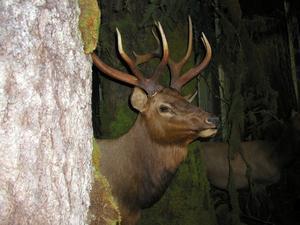Silvertip Tetra Fact Sheet
The “Silvertip Tetra”, “Hasemania nana“, is occasionally called the “Copper tetra”. It comes from the Sao Francisco River and its tributaries in Brazil. Although the Silvertip Tetra will grow to about 2 inches (5cm) long, most of the ones seen are little more than half this.
Other scientific names that have been used for this fish are Hasemania marginata, Hasemania nana, Hemigrammus nanus and Tetragonopterus nanus .
Water Conditions
This little tetra is less fussy than some tetras about its water parameters. It can take a slightly wide temperature range than most tropical fish, but it is definitely a tropical fish, not a cold water one. It should be happy in a community tank at a temperature of 24̊ C (75̊ F).
It can take pH of between 6 and 8. Neutral (7) is a good pH to aim for. Although in the wild, the Silvertip Tetra has soft water, it can take moderate hardness.
The tank should be well planted.
Food
The Silvertip Tetra is an easily fed omnivore. It will eat all normal fish foods although it will like the occasional live food like mosquito larvae and Daphnia. Frozen foods like Blood Worms are also good.
Companions
The Silvertip Tetra is a schooling fish and in a school is normally very peaceful. I suggest that at least 6 Silvertip Tetras be kept together. More would be even better. It is compatible with other reasonably peaceful fish, including: Gold Barbs, Cherry Barbs, PristellaTetras, Neon Tetras, Cardinal Tetras, Rummy Nose Tetras , Harlequin Rasboras, Scissortail Rasboras, Lemon Tetras, Emperor Tetras, Head and Tail Light Tetras, Glass Bloodfin Tetras, Swordtails, Platies, Mollies, Zebra Danios, Glowlight Tetras and White Cloud Mountain Minnows as well as the Corydoras catfish like the Peppered Catfish.
The Silvertip Tetra is also fast enough to be kept with slightly nippy fish like: Black Widow Tetras, Rosy Barbs, Tiger Barbs, Paraguay Tetras, Buenos Aires Tetras and Colombian Tetras.
A school of Silvertip Tetras is sometimes all right even with long finned, slow moving fish like Siamese Fighting Fish, Guppies and Endlers Guppies, but I would be very cautious about putting them together. If you have a smaller number of Silvertip tetras so they cannot form a school, I would definitely not recommend them as companions for these three types of fish.
Avoid large or very aggressive fish with these little beauties.
Sexing
The male Silvertip Tetra tends to have brighter colors than the female as well as being slimmer. The females get noticeably plumper when loaded with eggs.
Breeding
The Silvertip Tetra is an easily bred egg scatterer. It can be bred either in a small school, or as a pair.
Ideally, the males and females should be separated and conditioned well with rich food like mosquito larvae and Daphnia as well as frozen food like Blood Worms.
If breeding as a pair, select the male with the most vibrant colors, and the plumpest and best looking of the females.
With school breeding, select some of each sex.
The breeding tank should be dimly lit, and contain fine leaved plants like Java Moss. If possible, have something on the bottom of the plant to prevent the parents getting at eggs that fall down. Some people use marbles for this task, although others prefer a mesh of suitable size.
The parents will eat the eggs and the babies so they are normally removed after spawning.
The eggs should hatch in a little over a day, and the fry should be free swimming in another 3-4 days. They will need fine food like infusoria (Protozoa) for a few days. This can be supplemented with very fine commercial fry foods. Soon they will be able to eat slightly bigger foods. At all stages, suitable sized live food is good for them.
Note that both the eggs and the fry can be damaged by bright lights; low lighting should be used for the breeding and raising tank.
Pest Fish
Although the Silvertip Tetra is a peaceful and well behaved fish in a community aquarium, it is necessary to exercise the same precautions to prevent their accidental release into ecosystems they are not native to. They could certainly damage other ecosystems.
Sources
I am grateful to the following places for information about the Silvertip Tetra: Fish Base, Seriously Fish, Aqua-fish.net and Aquatic community.

